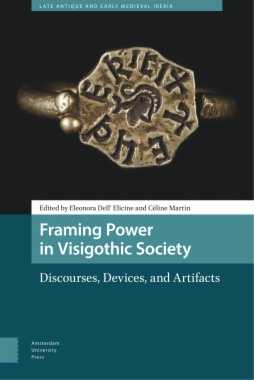This volume examines how power was framed in Visigothic society and how a diverse population with a complex and often conflicting cultural inheritance was thereby held together as a single kingdom. Indeed, through this dynamic process a new, early medieval society emerged. Understanding this transformation is no simple matter, as it involved the deployment of an array of political and cultural resources: the production of knowledge, the appropriation of Patristic literature, controlling and administering rural populations, reconceptualizing the sacred, capital punishment and exile, controlling the manufacture of currency, and defining Visigothic society in relation to other polities such as the neighbouring Byzantine state. In order to achieve an analysis of these different phenomena, this volume brings together researchers from a variety of disciplines. This interdisciplinary approach therefore expands the available sources and reformulates topics of traditional scholarship in order to engage with a renewal of Visigothic Studies and reformulate the paradigm of study itself. As a result, this volume rethinks frameworks of power in the Peninsula along not only historical and archaeological but also anthropological terms, presenting the reader with a new understanding of Iberian society as a whole.
- Cover
- Table of Contents
- 1. Texts, Discourses, and Devices: Reading Visigothic Society Today
- Eleonora Dell’ Elicine and Céline Martin
- 2. Presence of Augustine of Hippo in Isidore of Seville: Some Provisional Remarks
- 3. The Bishop and the Word. Isidore of Seville and the Production of Meaning
- 4. Unearthing Peasant Societies: Historiography and Recent Contributions in the Archaeology of the Rural World during Visigothic Times
- 5. Excolentes sacra fontium vel arborum. Pagan Cults, Kinship, and Regimes of Sacralization in the Visigothic Kingdom of Toledo
- 6. Ervig and Capital Penalties: The Way of Exile
- 7. ‘Put All Your Trust in Ansemundus’. A Look at Distrust in Visigothic-Byzantine Diplomatic Relations
- 8. Visigothic Currency: Recent Developments and Data for Its Study
- Index
- List of Illustrations
- Plates
- Pl. 1. Julio Martínez Santa Olalla, pictured with a snake. Originally from the Museo Arqueológico Nacional.
- Pl. 2. Distribution map of ‘Visigothic’ funerary context (Palol, 1966).
- Pl. 3. Cuarto de las Hoyas (Fabián, et al., 1985).
- Pl. 4. Extensive excavations at Ladera de los Prados (Strato, 2002a).
- Pl. 5. Silos at the site of Carratejera (Strato, 2003).
- Pl. 6. Distribution of rural sites in the valley of the Eresma and the Voltoya (province of Segovia).
- Pl. 7. Spatial distribution of features in Ladera de los Prados.
- Pl. 8. Metal tools from the context of La Mata del Palomar (Strato, 2002b).
- Pl. 9. Tremissis issued by Liuvigild with Victoria-cicada type on the reverse and mention of the Toleto mint.
- Pl. 10. New tremissis issued by Hermenegild.
- Pl. 11. Tremissis issued by Reccared I in Arofre.
- Pl. 12. Tremissis issued by Gundemar in Inceio.
- Pl. 13. Tremissis issued by Wittiza in Eliberri.
- Pl. 14. Tremissis issued by Egica in Tarracona.
- Pl. 15. Tremissis issued by Wittiza in Egitania.
- Pl. 16. Tremissis issued by Wittiza in Emerita.
- Pl. 17. Tremissis issued by Chintila in Tarracona.
- Pl. 18. Tremissis issued by Tulga in Tucci.
- Pl. 19. Tremissis issued by Recesswinth in Bracara.
- Figures
- Fig. 1. Graphic Graphic representation of the number of coins in each
hoard (sometimes the figure is only approximate), and
the number of coins registered in the corpus.
- Fig. 2. Comparison of the number of isolated finds published and the number represented in the corpus.
- Fig. 3. Isolated finds, hoard-related finds, and total number of known coins, grouped by monarch.
- Fig. 4. Known Visigothic coins according to monarch and province.
- Fig. 5. Number of hoards and isolated finds by province.
- Fig. 6. Number of specimens found in relation to hoards and isolated finds.
- Tables
- Table 1. Synoptic table of Visigothic coinage issued by Liuvigild and Hermenegild.
- Table 2. Quantitative representation of Visigothic kings in the monetary corpus.
- Table 3. Visigothic monetary hoards.
- Table 4. Isolated finds by reign.
- Table 5. Visigothic monetary finds (hoards and isolated finds) and their impact on the monetary corpus.
- Backcover

